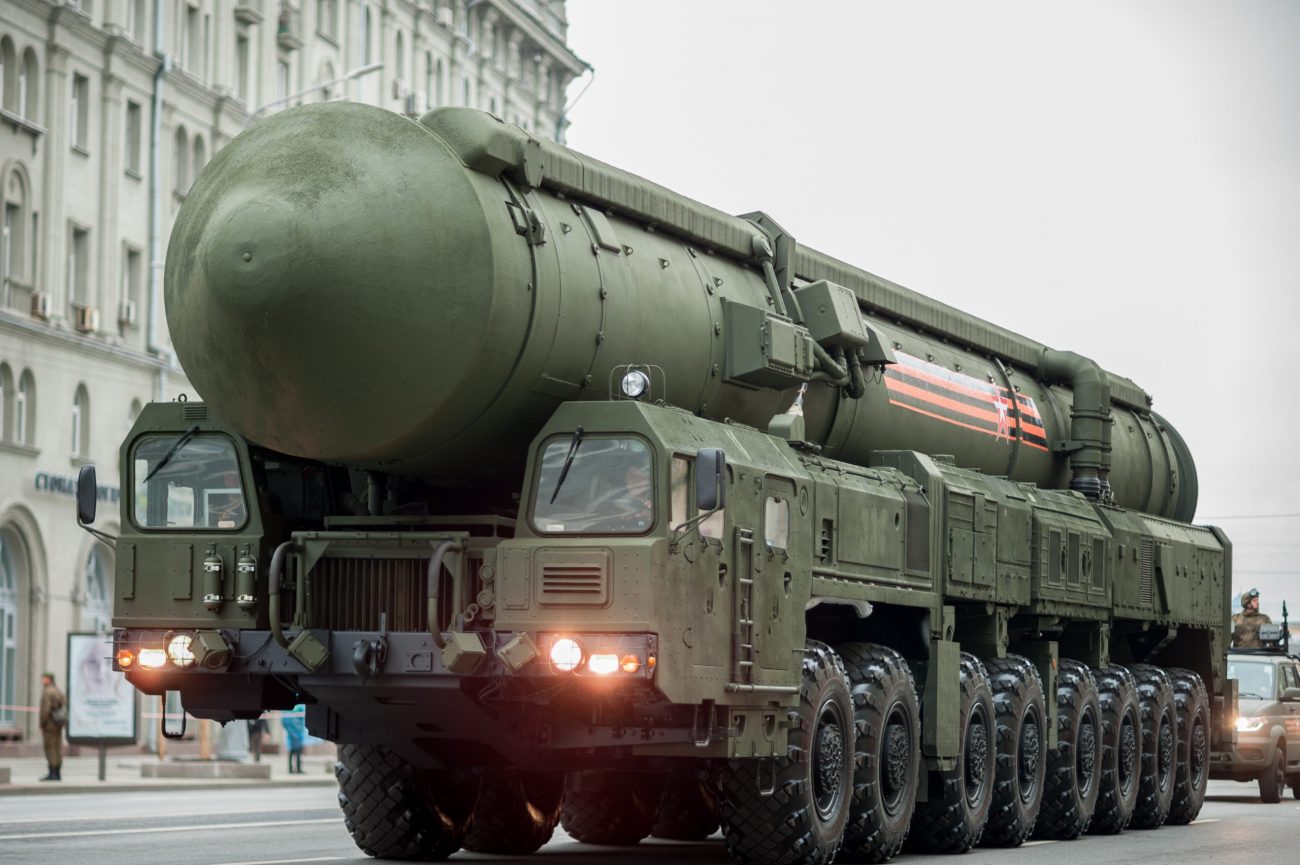On Monday (9 May), Russia will commemorate the defeat of Nazi Germany in World War II against the backdrop of the ongoing turmoil in Ukraine to remember a fight that ended 77 years ago.
Nuclear missiles and high-tech armaments have begun marching through Moscow ahead of the Victory Day parade.
On May 7, during the rehearsal for Russia’s Victory Day parade, the thermonuclear RS-24 Yars ballistic missile, which experts believe can carry up to 10 warheads, grabbed center stage when it was wheeled between rows of armed guards atop a 16-wheeler vehicle, reported UK based media.
The display of this intercontinental weapon, which weighs 49.6 tones and has a range of 12,000 kilometers, and can cruise at speeds of up to 24,500 kilometers per hour, comes at a time when regional tensions are mounting owing to the ongoing war. `

Several Iskander-M missile launchers shortly followed the weapon of mass destruction during the rehearsal. Eight MiG-29 jets flew past in a ‘Z’ formation, symbolizing Putin’s military intervention in Ukraine.
Political expert Abbas Gallyamov told the BBC: Everyone is expecting something to happen [on 9 May], both the enemies of Putin and his supporters. “These expectations created a vacuum that needs to be filled. If it’s not, Putin will lose politically.”
And Ukraine’s first deputy interior minister Yevhen Yenin said Victory Day’s steeped history is like ‘red to a bull’ for Putin. More assaults are expected this week, according to the Ukrainian military, particularly at the Azovstal steelworks in Mariupol.
Yenin fears Russia is ‘preparing to dance over bones in Mariupol.’
RS-24 Yars (SS-27 Mod 2)
Russian intercontinental ballistic missile RS-24 (NATO: SS-27 Mod 2) Yars is an updated version of the Topol-M. In the West, it is known as SS-29. It stands on a 16×16 wheeled chassis similar to the Topol-M.
It appears identical from the outside. However, It does have a better missile that is also heavier. The Yars was designed as both a road-mobile and a silo-based system with the same missile. It was originally tested in 2007, and the Russian Strategic Missile Forces acquired it in 2010.
The RS-24 Yars (NATO: SS-27 Mod 2) is a three-stage solid-fuel missile, MIRV-capable (Multiple Independently Targetable Reentry Vehicles) ICBM (InterContinental Ballistic Missile) with a range of 10,500 km.
The missile is also thought to include a revised re-entry vehicle (RV) design, which will allow the RVs to navigate in space and during re-entry. The RS-24’s total launch weight is estimated to be 49,000 kg.

The Yars has a silo-based version that is compatible with older Russian ICBM silos that have been phased out of use. It takes advantage of all of the prior missiles’ infrastructure.
The new missile can be loaded into the silo in no time. Ten Yars missiles and a command post are typical of a silo-based unit.
Yars Transporter erector launcher (TEL) is built on a Belarusian MZKT-79221 16×16 heavy high mobility chassis for road mobility. This chassis was created specifically for the intercontinental missile Topol-M. The steering is done on the first three and last three axles. As a result, despite its size, this vehicle is extremely nimble.
It also offers excellent cross-country mobility. A three-person crew drives the TEL vehicle. The Yars mobile launcher can go 500 kilometers on its own. It permits the vehicle to operate in an area the size of a small European country without being discovered.

Road mobile intercontinental ballistic missiles are harder to identify and strike. Once the country has been assaulted, the Yars has a good chance of surviving the first strike. The missiles can leave their bases and operate in distant forest areas once they are on high alert, increasing their survivability.
The missile takes 7 minutes to set up for launch. During field deployment, the Yars missile can be launched from a designated site, a unique garage with a sliding roof, or an unprepared position. Once the missile is launched, the TEL vehicle can leave its location.
The Yars TEL is escorted by a number of support vehicles during field deployment, including a support vehicle, mobile command posts, signals vehicle, fuel tanker, and a variety of additional military vehicles with personnel to assure the missile’s security. In the event of an emergency, the TEL vehicle can operate without its escort.
In addition, the RS-24 is an important component of Moscow’s endeavor to improve the survivability of its nuclear forces and counteract US missile defense systems. For the next 20 years, Russia’s nuclear forces are projected to rely on the Yars ICBM.
- Contact the author at ashishmichel@gmail.com
- Follow EurAsian Times on Google News




